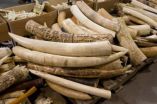(Press-News.org) An international team led by Eric A. Hendrickson of the University of Minnesota and Duncan Baird of Cardiff University has solved a key mystery in cancer research: What allows some malignant cells to circumvent the normal process of cell death that occurs when chromosomes get too old to maintain themselves properly?
Researchers have long known that chromosomal defects that occur as cells repeatedly divide over time are linked to the onset of cancer. Now, Hendrickson, Baird and colleagues have identified a specific gene that human cells require in order to survive these types of defects.
"We have identified a gene that, as cells age, seems to regulate whether the cells become cancerous or not," Hendrickson said. "This gene has never been identified before in this role, so this makes it a potentially very important therapeutic target."
As cells divide their telomeres — the DNA "caps" that protect the ends of chromosomes from damage — shorten, leaving the chromosomes vulnerable to sticking to each other. In normal cells, this chromosome stickiness is a death knell — a signal to defective-cell cleanup crews to move in and finish them off. Malignant cells, however, are somehow able to elude the cleanup crews.
The current research, published in the August 7 issue of the journal Cell Reports, identifies an essential component that allows older cells to evade death. Using sophisticated gene-targeting techniques to disable particular genes in human cells and then studying the impact on telomere fusion, the researchers found that cells escaped death only when the gene Ligase 3 was active but not when its action, which appears to promote fusion within like chromosomes rather than between different chromosomes, was blocked.
"Telomere dysfunction has been identified in many human cancers, and as we have shown previously, short telomeres can predict the outcome of patients with [chronic lymphocytic leukemia] and probably many other tumor types," said Baird. "Thus, the discovery that Ligase 3 is required for this process is fundamentally important."
Interestingly, the research was made possible by a chance meeting between Hendrickson, who is an expert in using gene targeting to create cells missing key components (such as Ligase 3), and Baird, who is a leading expert in analyzing telomeres. When the two discovered at a scientific conference that they were both looking at the role of Ligase 3 in cancer, they decided to collaborate.
"The collaboration paid off as we were able to uncover something that neither one of us could have done on our own," Hendrickson says.
Importantly, additional studies are already underway. In particular, the reliance on Ligase 3 appears, in turn, to be dependent upon the activity of another key DNA repair gene, p53.
"Since p53 is the most commonly mutated gene in human cancer, it now behooves us to discover how these two genes are interacting and to see if we can't use that information to develop synergistic treatment modalities," says Hendrickson.
INFORMATION: END
University of Minnesota research finds key piece to cancer cell survival puzzle
2014-08-07
ELSE PRESS RELEASES FROM THIS DATE:
Notch developmental pathway regulates fear memory formation
2014-08-07
Nature is thrifty. The same signals that embryonic cells use to decide whether to become nerves, skin or bone come into play again when adult animals are learning whether to become afraid.
Researchers at Yerkes National Primate Research Center, Emory University, have learned that the molecule Notch, critical in many processes during embryonic development, is also involved in fear memory formation. Understanding fear memory formation is critical to developing more effective treatments and preventions for anxiety disorders such as post-traumatic stress disorder (PTSD).
The ...
Scientists uncover stem cell behavior of human bowel for the first time
2014-08-07
For the first time, scientists have uncovered new information on how stem cells in the human bowel behave, revealing vital clues about the earliest stages in bowel cancer development and how we may begin to prevent it.
The study, led by Queen May University of London (QMUL) and published today in the journal Cell Reports, discovered how many stem cells exist within the human bowel and how they behave and evolve over time. It was revealed that within a healthy bowel, stem cells are in constant competition with each other for survival and only a certain number of stem ...
Cancer categories recast in largest-ever genomic study
2014-08-07
New research partly led by UC San Francisco-affiliated scientists suggests that one in 10 cancer patients would be more accurately diagnosed if their tumors were defined by cellular and molecular criteria rather than by the tissues in which they originated, and that this information, in turn, could lead to more appropriate treatments.
In the largest study of its kind to date, scientists analyzed molecular and genetic characteristics of more than 3,500 tumor samples of 12 different cancer types using multiple genomic technology platforms.
Cancers traditionally have ...
Scientists uncover key piece to cancer cell survival puzzle
2014-08-07
A chance meeting between two leading UK and US scientists could have finally helped solve a key mystery in cancer research.
Scientists have long known that chromosomal defects occur as cells repeatedly divide. Over time, these defects are linked to the onset of cancer.
Now, Professor Duncan Baird and his team from Cardiff University working in collaboration with Eric A. Hendrickson from the University of Minnesota, have identified a specific gene that human cells require in order to survive these types of defects.
"We have found a gene that appears to be crucial ...
Regulations needed to identify potentially invasive biofuel crops
2014-08-07
URBANA, Ill. – If the hottest new plant grown as a biofuel crop is approved based solely on its greenhouse gas emission profile, its potential as the next invasive species may not be discovered until it's too late. In response to this need to prevent such invasions, researchers at the University of Illinois have developed both a set of regulatory definitions and provisions and a list of 49 low-risk biofuel plants from which growers can choose.
Lauren Quinn, an invasive plant ecologist at U of I's Energy Biosciences Institute, recognized that most of the news about invasive ...
Peer-reviewed paper says all ivory markets must close
2014-08-07
NEW YORK (August 7, 2014) – The message is simple: to save elephants, all ivory markets must close and all ivory stockpiles must be destroyed, according to a new peer-reviewed paper by the Wildlife Conservation Society. The paper says that corruption, organized crime, and a lack of enforcement make any legal trade of ivory a major factor contributing to the demise of Africa's elephants.
Appearing in the August 7th online edition of the journal Conservation Biology, the paper says that if we are to conserve significant wild populations of elephants across all regions ...
Carnegie Mellon's new programming language accommodates multiple languages in same program
2014-08-07
PITTSBURGH—Computer scientists at Carnegie Mellon University have designed a way to safely use multiple programming languages within the same program, enabling programmers to use the language most appropriate for each function while guarding against code injection attacks, one of the most severe security threats in Web applications today.
A research group led by Jonathan Aldrich, associate professor in the Institute for Software Research (ISR), is developing a programming language called Wyvern that makes it possible to construct programs using a variety of targeted, ...
Stock prices of companies that use the same underwriter tend to move together
2014-08-07
HOUSTON – (Aug. 7, 2014) – The stock prices of companies that use the same lead underwriter during their equity offerings tend to move together, according to a new study by financial economics experts at Rice University and the University of Alabama.
"We tested the hypothesis that investment banking networks affect stock prices and trading behavior," said James Weston, a professor of finance at Rice's Jones Graduate School of Business. "Consistent with the notion that investment banks such as Goldman Sachs and Merrill Lynch serve as information hubs for segmented groups ...
Elderly with depression, mild cognitive impairment more vulnerable to accelerated brain aging
2014-08-07
PITTSBURGH, Aug. 7, 2014 – People who develop depression and mild cognitive impairment (MCI) after age 65 are more likely to have biological and brain imaging markers that reflect a greater vulnerability for accelerated brain aging, according to a study conducted by researchers at the University of Pittsburgh School of Medicine. The findings were published online in Molecular Psychiatry.
Older adults with major depression have double the risk of developing dementia in the future compared with those who have never had the mood disorder, said senior investigator Meryl A. ...
Largest cancer genetic analysis reveals new way of classifying cancer
2014-08-07
Researchers with The Cancer Genome Atlas (TCGA) Research Network have completed the largest, most diverse tumor genetic analysis ever conducted, revealing a new approach to classifying cancers. The work, led by researchers at the UNC Lineberger Comprehensive Cancer Center at the University of North Carolina at Chapel Hill and other TCGA sites, not only revamps traditional ideas of how cancers are diagnosed and treated, but could also have a profound impact on the future landscape of drug development.
"We found that one in 10 cancers analyzed in this study would be classified ...


